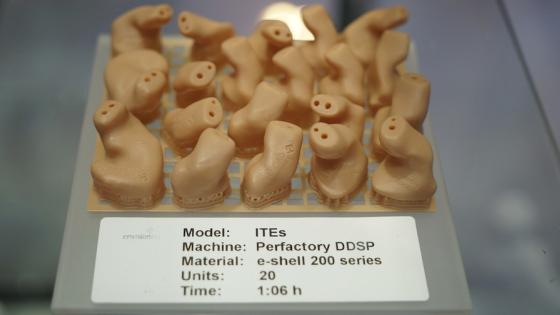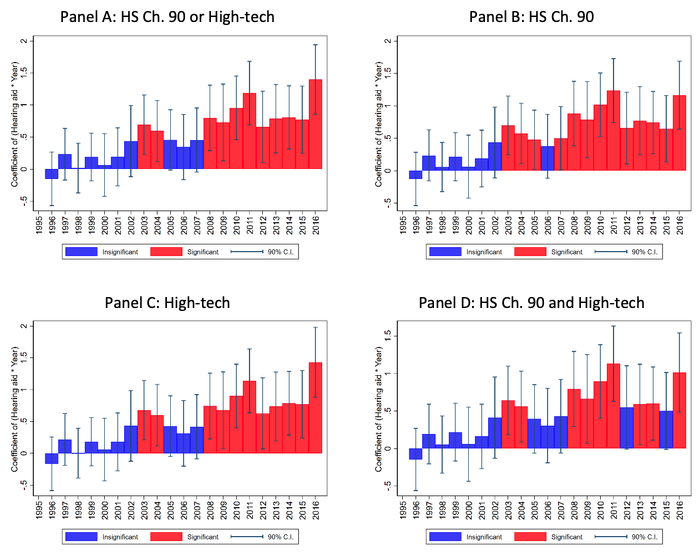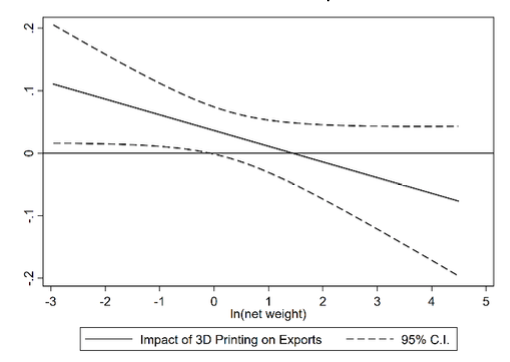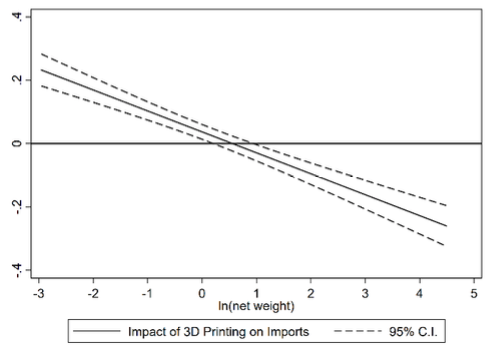Will 3D printing disrupt world trade? The new technology has been accompanied by predictions of a future where goods will be printed locally, global supply chains will be shortened, and international trade will be dramatically reduced. Firms (and perhaps even consumers) will be able to create a solid three-dimensional object from a digital file and will no longer need to import printable goods and components. One study calculates that as much as 40% of trade could be eliminated by 2040 (Leering 2017). Other studies acknowledge that the impact of 3D printing on trade may be complex but still find that 3D printing and automation could lower world trade by 10% by 2030 (Lund and Bughin 2019).
In contrast, many earlier improvements in production processes that have reduced real costs have boosted international trade. The industrial revolution is perhaps the best example, where a transformation in technology and management practices brought huge productivity gains, output growth, and expanding trade. The digital revolution of the 1990s had a similar boosting effect on world trade through the rise of global supply chains (Baldwin 2016). The impact of 3D-printing technology on world trade is, therefore, an empirical question.
We address this question in a new paper (Freund et al. 2019), focusing on hearing aids, a product that since the mid-2000s has almost exclusively been produced with 3D printing. We then extend the analysis to 35 other products that are increasingly using 3D printing. The evidence suggests that firms (and countries) will continue to specialise and 3D printing will stimulate rather than hamper trade growth.
The 3D printing revolution in hearing aids
The good where 3D printing is most prevalent is hearing aids. Nearly 100% of all hearing aids consumed in the world are produced using 3D printing. 3D printers transformed the hearing aid industry in less than 500 days in the mid-2000s, which makes it a unique natural experiment to assess the trade effects of this technology (Figure 1).
Figure 1 Adoption of 3D printing for custom hearing aids at Phonak
Source: Brans (2013)
A first look at trade data suggests that 3D printing boosted trade in hearing aids. Figure 2 shows that trade in hearing aids increased more than total trade in similar goods and more rapidly than high-tech products more broadly. We find that the divergence happened around 2007, precisely when the 3D-printing technology was being adopted, and that distance between the series remained roughly constant afterwards.
Figure 2 Evolution of trade in hearing aids
3D printing boosted trade in hearing aids
We examine the data in two ways, first using a standard difference-in-difference technique and comparing the growth in hearing-aid trade to other similar products. Second, we use synthetic controls, which allows for a data-driven selection process of control groups, as an alternative method.
The main result is that 3D printing leads to an increase in world trade. Specifically, we find that the development of 3D printing led to an increase in trade of 58% over nearly a decade, relative to the baseline. A dynamic extension of the model shows that the impact on trade follows the large expansion of 3D printing in the hearing-aid industry in 2007 (Figure 3).
Figure 3 The impact of 3D printing on trade in hearing aids (difference-in-difference with alternative control groups)
Note: The figures plot the coefficients for the interaction between the hearing aid and individual year dummy variables obtained using a standard difference-in-differences method.
The results also indicate that comparative advantage is strengthened. The countries that appear to benefit the most from the introduction of the new technology are advanced and middle-income economies. When we study the impact on imports, results show that there is a stronger effect on developing countries, particularly low-income countries, pointing to welfare gains on the consumption side for these economies.
The intuition for the results is that 3D printing led to a reduction in the cost of production and an increase in the quality of the product. Demand rose and trade expanded. There is no evidence that 3D printing shifted production closer to consumers and displaced trade. One reason is that hearing aids are light products which makes them relatively cheap to transport internationally. A second reason is that printing hearing aids in high volumes requires a large investment in technology and machinery as well as the presence of highly specialised inputs and services.
The countries that were early innovators—Denmark, Switzerland and Singapore—remain the main export platforms. Some middle-income economies such as China, Mexico, and Vietnam have also been able to substantially increase their market shares between 1995 and 2015. As a result, exports did not become more concentrated in the top-producing countries following the introduction of 3D printing.
…and even beyond hearing aids
While these results are specific to hearing aids, the insights may be more general. We examine 35 other products that are increasingly being 3D-printed and find similar patterns. These budding 3D-printing products have also experienced faster trade growth than otherwise similar goods. In contrast to the results for hearing aids, there is some evidence of disruption in comparative advantage which indicates that there might be differences across products that deserve further investigations as more data become available.
Finally, we investigate the extent to which the weight of 3D-printable products affects our main result. We find that the positive effect of 3D printing on trade decreases with product weight and could even reverse for heavy products (Figure 4). These results suggest that while the technology appears to boost trade on average, it may be used to produce goods closer to consumers for products with high transport costs.
Figure 4 Effects of 3D printing on trade conditional on weight
Panel A: Effect on exports
Panel B: Effect on imports
Note: The figures plot the sum of the coefficients of an indicator variable for 3D-printable sectors for 2007 onwards and the interaction term between that variable and the log of median product’s weight obtained using a standard difference-in-differences method.
Conclusion
How technology affects international trade is a central question for economic development. In the 1990s, as trade expanded rapidly powered by new communication technologies that allowed the rise of global supply chains, poor countries found new ways to connect to the world economy and grow. Today, many fear that new production technologies such as automation and 3D printing could draw production closer to consumers, thereby reducing development opportunities through trade integration. This research shows that 3D printing is on average a boon, not a curse, to world trade. Still, as technologies evolve and affect trade patterns, there is a need to better understand how countries can take advantage of development opportunities through trade in this rapidly changing environment.
Authors’ note: The views expressed in this column are those of the authors and they do not necessarily represent the views of the World Bank Group.
References
Baldwin, R (2016), The Great Convergence: Information technology and the new globalization, Cambridge, MA: Harvard University Press.
Brans, K (2013), “3D printing, a maturing technology”, IFAC Proceedings Volumes 46(7): 468–72.
Freund, C, A Mulabdic and M Ruta (2019), “Is 3D Printing a Threat to Global Trade? The Trade Effects You Didn't Hear About”, Policy Research Working Paper WPS 9024, Washington, DC: World Bank Group.
Leering, R (2017), “3D printing: A threat to global trade”, ING, 28 September.
Lund, S, and J Bughin (2019), “Next-generation technologies and the future of trade”, VoxEU, 10 April.
Endnotes
[1] The HS code for hearing aids is 902140. Similar goods are those in chapter 90 to which hearing aids belong: optical, photographic, cinematographic, measuring, checking, medical or surgical instruments and apparatus; parts and accessories.







